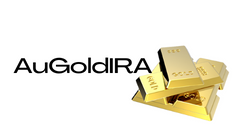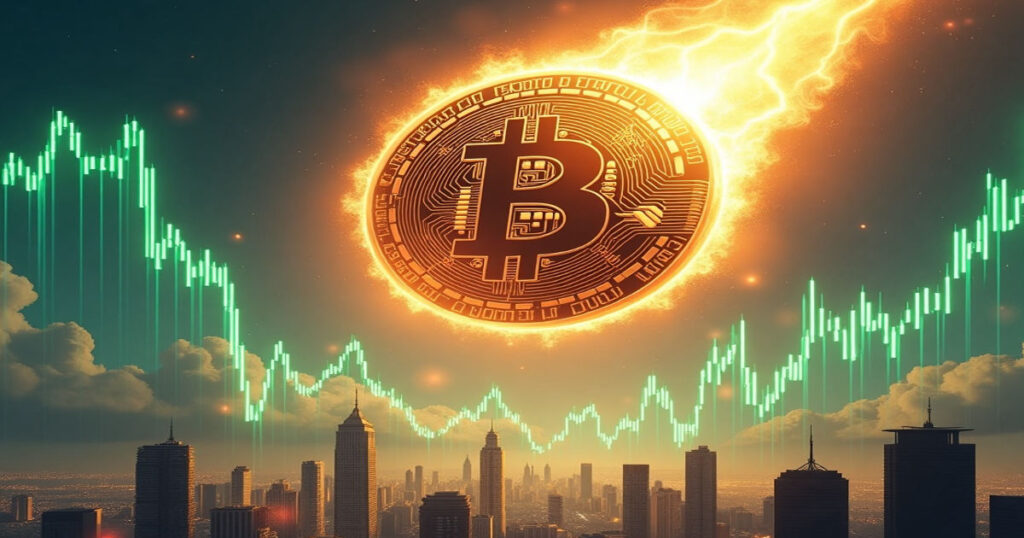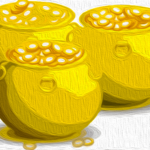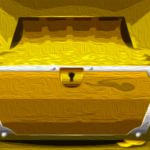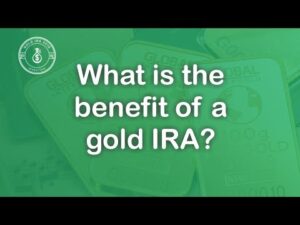
Hey there, crypto enthusiasts! Have you heard about the recent rollercoaster ride Bitcoin took in the financial markets? Let's dive into the details of why the price slid down to $118,000 after briefly surpassing Google's market cap. It's a fascinating journey that sheds light on Bitcoin's growing institutional importance and the evolving landscape of digital assets.
The Rise and Fall of Bitcoin Price
Market Capitalization Milestone
Imagine this: Bitcoin skyrocketed to an all-time high of $124,283, momentarily overtaking Google's parent company, Alphabet, in market capitalization. However, this joy was short-lived as profit-taking by traders and uncertainties triggered a swift correction.
Maturing Market Dynamics
Despite the volatility, the recent price surge and subsequent dip reflect Bitcoin's maturing market. Institutional players are now actively participating, creating stronger price support levels and paving the way for a more stable market environment.
Institutional Adoption and Market Outlook
Corporate and Sovereign Interest
From corporate treasuries to sovereign wealth funds, institutional interest in Bitcoin is surging. Over 200 companies have added Bitcoin to their reserves, while even Norway's sovereign wealth fund indirectly holds exposure to Bitcoin. This shift indicates a growing comfort with Bitcoin as a strategic asset rather than a speculative venture.
Regulatory Developments and Executive Support
Exciting news on the regulatory front! President Trump's executive order allowing 401(k) retirement accounts to invest in Bitcoin has provided an additional boost to the market. With trillions of dollars potentially flowing into Bitcoin, analysts foresee sustained institutional demand, further solidifying Bitcoin's position in the financial landscape.
Market Trends and Expectations
Macroeconomic Factors and Price Stability
Bitcoin's price trajectory is not immune to macroeconomic influences. Factors like U.S. inflation data and Federal Reserve rate cuts play a crucial role. Despite this, the current rally seems more fundamentally supported, driven by genuine institutional adoption rather than speculative fervor.
Long-term Growth and Market Integration
Year-to-date, Bitcoin has shown resilience, matching gold's performance and gaining credibility as a mainstream financial asset. The ability to hold above $118,000 post-correction signifies a deeper integration of Bitcoin into institutional portfolios, hinting at future price stability amid ongoing adoption.
Looking Ahead
As corporate adoption surges and new investment avenues emerge, the Bitcoin market is poised for further growth and stability. While short-term volatility remains a factor, the broader trend points towards a more mature and integrated digital asset landscape.
Exciting times lie ahead for Bitcoin enthusiasts and investors as the market continues to evolve and expand. Stay tuned for more updates on this fascinating journey through the world of cryptocurrencies!
Frequently Asked Questions
What are the pros & con's of a golden IRA?
An excellent investment vehicle is a gold IRA. This is for people who wish to diversify but do not have access to traditional banking services. It allows you to invest freely in precious metals, such as gold, silver and platinum until they are withdrawn.
The downside is that early withdrawals will result in ordinary income taxes on earnings. But because these funds are held outside of the country, there is little chance of them being seized by creditors when you default on your loan.
So if you like owning gold without worrying about taxes, a gold IRA may be right for you.
How much should precious metals make up your portfolio?
To protect yourself from inflation, investing in physical metals is the best option. This is because you not only get the current price but also the future value when you invest precious metals. You can expect your investment to increase in value with the rise of metal prices.
Tax benefits will accrue if your investments are kept for at most five years. You will also have to pay capital gains taxes if your investments are sold after the five-year period. Our website has more information about how to purchase gold coins.
What is the best precious-metal to invest?
An investment in gold can yield high returns on its capital. It also protects against inflation and other risks. As people worry about inflation, the price of gold tends increase.
It is a smart move to purchase gold futures. These contracts assure you that you will receive a specified amount of precious metal at a fixed price.
But gold futures may not be right for everyone. Some prefer physical gold.
They can easily exchange their gold with other people. They can also trade it anytime they like.
Some people want to avoid paying tax on their gold. They buy gold directly from government to do this.
You will need to visit several post offices to complete this process. First, convert any gold you have into coins or bars.
Finally, you'll need to get a stamp to put on the bars or coins. Finally, you send them to the US Mint. There, they melt down the coins and bars into new ones.
These new coins, bars, and bars have the original stamps stamped onto them. That means that they're legal tender.
You won't need to pay taxes if gold is purchased directly from the US Mint.
Decide what precious metal do you want to invest?
How do I choose the right IRA for me?
The first step to finding an IRA for you is understanding your account type. This includes whether your goal is to open a Roth IRA (or a traditional IRA). You also want to know how much money you have available to invest.
The next step is to choose the best provider for you. Some providers offer both accounts while others are specialized in one.
Consider the fees that come with each option. Fees may vary from one provider to another and could include annual maintenance fees as well. A monthly fee may be charged by some providers depending on how many shares your company holds. Others may only charge one quarter.
Can I take physical possession of gold in my IRA?
Many people ask themselves whether it is possible to physically own gold in an IRA. It is a valid question, as there is no legal way to possess gold in an IRA account.
But when you look closely at the law, nothing stops you from owning gold in an IRA.
The problem is that most people don't realize how much money they could save by putting their gold in an IRA instead of keeping it in their own homes.
It's easy for gold coins to be thrown away, but it's much more difficult to keep them in an IRA. If you decide to keep your gold in your own home, you'll pay taxes on it twice. Once for the IRS and once for the state where you live.
You can also lose your gold and have to pay twice the taxes. Why would you keep your gold in the house?
You might argue that you need the security of knowing that your gold is safe in your home. It is important to store your gold somewhere safer in order to prevent theft.
You shouldn't even leave your gold in your home unless you plan to visit often. If your gold is left unattended, thieves could easily steal it when you're away from home.
An insured vault is a better choice for gold storage. This will ensure that your gold is protected against fire, flood, earthquake and robbery.
Another benefit to keeping your gold in vaults is that you won’t have to pay any property taxes. Instead, income tax will be charged on any gains made from the sale of your precious metal.
A IRA can be a great option if you want to avoid paying tax on your gold. You don't pay income tax on the interest you earn with an IRA.
Since you aren't required to pay capital gains tax on your gold, you'll have access to the full value of your investment whenever you want to cash it out.
Federally regulated IRAs mean that you won't face any difficulties in transferring your gold to another bank if it moves.
The bottom line? You can own your gold in an IRA. Your fear of it being stolen is what holds you back.
Statistics
- If you accidentally make an improper transaction, the IRS will disallow it and count it as a withdrawal so that you would owe income tax on the item's value and, if you are younger than 59 ½, an additional 10% early withdrawal penalty. (forbes.com)
- SEP-IRA”Simplified employee pension” For self-employed people like independent contractors, freelancers, and small-business ownersSame tax rules as traditional IRASEP IRA contributions in 2022 are limited to 25% of compensation or $66,000, whichever is less4. (sltrib.com)
- Same tax rules as traditional IRA SEP IRA contributions in 2022 are limited to 25% of compensation or $66,000, whichever is less Before setting up a Silver IRA, understand the fees and IRS restrictions. (sltrib.com)
- Silver must be 99.9% pure • (forbes.com)
External Links
en.wikipedia.org
investopedia.com
wsj.com
regalassets.com
How To
Precious Metals that have been approved by the IRA
IRA-approved precious metallics are great investments, whether you want to save for retirement and invest in your next venture. Many options are available that can diversify your portfolio while protecting against inflation. These include silver coins, gold bars, and silver coins.
Precious metal investments products can be purchased in two forms. Physical bullion products such bars or coins are considered to be physical assets, as they exist in tangible form. On the other hand, exchange-traded funds (ETFs) are financial instruments that track the price movements of an underlying asset, such as gold. ETFs can be purchased directly from the company issuing them, and trade in the same way as stocks on stock exchanges.
There are many precious metals to choose from. For jewelry and ornamentation, gold and silver are common. Platinum and palladium are associated more with luxury items. Palladium has a tendency to retain its value longer than platinum making it an ideal choice for industrial uses. While silver can also be useful in industrial applications, it is often preferred for decorative purposes.
Due to the higher cost of mining and refining materials, physical bullion items tend to be more expensive. These products are generally safer and more secure than paper currencies. For example, consumers can lose confidence in the currency or look for alternative currencies when the U.S. dollars loses its purchasing power. However, physical bullion products don't rely on trust between nations or companies. Instead, they are backed by governments and central banks, giving customers peace of mind.
Demand and supply affect gold prices. In other words, demand drives the price up. However, supply is greater than demand and prices fall. This dynamic opens up opportunities for investors who want to profit from fluctuations of the price gold. This fluctuation is good news for investors who own physical bullion items as they earn a higher return.
Precious metals, unlike other investments, are immune to economic recessions or changes in interest rates. The price of gold will rise as long as there is strong demand. This is why precious metals are considered safe havens when times are uncertain.
The most well-known precious metals are:
- Gold – This is the oldest kind of precious metal. It is often called “yellow gold”. While gold is a well-known element, it is very rare to find underground. Most of the world’s remaining gold reserves are found in South Africa.
- Silver – After gold, silver ranks second in precious metals. Silver is mined from the earth's natural resources. Unlike gold, however, silver is typically extracted from ore rather than from rock formations. Due to its durability and conductivity as well as its resistance to tarnishing it is widely used for commerce and industry. The United States makes more than 98% all of the global silver production.
- Platinum – The third most valuable precious metallic is platinum. It can be used in many industrial applications, including fuel cells, catalysts, and high-end medical devices. It is used in dentistry for dental crowns, fillings and bridges.
- Palladium- Palladium, the fourth most precious precious metal, is Palladium. Because of its strength, stability and popularity, Palladium is rapidly gaining in value among manufacturers. Palladium is also used in electronics, automobiles, aerospace, and military technology.
- Rhodium – Rhodium is fifth most valuable precious metal. Rhodium is very rare but is highly sought for its use in automotive catalysts.
- Ruthenium-Ruthenium is the sixth-most valuable precious metal. While there are only limited supplies of platinum and palladium, ruthenium is plentiful. It is used in steel making, aircraft engines, and chemical manufacturing.
- Iridium – Iridium is the seventh most valuable precious metal. Iridium is an essential component of satellite technology. It is used to create orbiting satellites which transmit television signals, telephone calls and other communications.
- Osmium – Osmium, the eighth most precious precious metal, is also known as Osmium. Osmium's ability to withstand extreme temperatures makes it a common metal in nuclear reactors. Osmium is also used to make jewelry, medicine, and cutting tools.
- Rhenium – Rhenium is the 9th most valuable precious metal. Rhenium can also be used in rocketry, oil refinement, and semiconductor manufacturing.
- Iodine – Iodine is the tenth-most valuable precious metal. Iodine is used for photography, radiography and pharmaceuticals.
—————————————————————————————————————————————————————————————-
Based on [POSTTITLE]
by [POSTAUTHOR]
